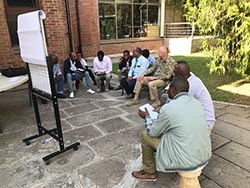I expect that many readers of the N2Africa podcaster would readily answer ‘no’ to that question. However in spite of knowing that land area estimates can be unreliable, N2Africa and other agricultural development projects often rely on estimates of plot areas, and that on top of estimates of crop yield. We may have no other choice if we want a lot of data, preferably for multiple (past) seasons, for several crops in different countries.
